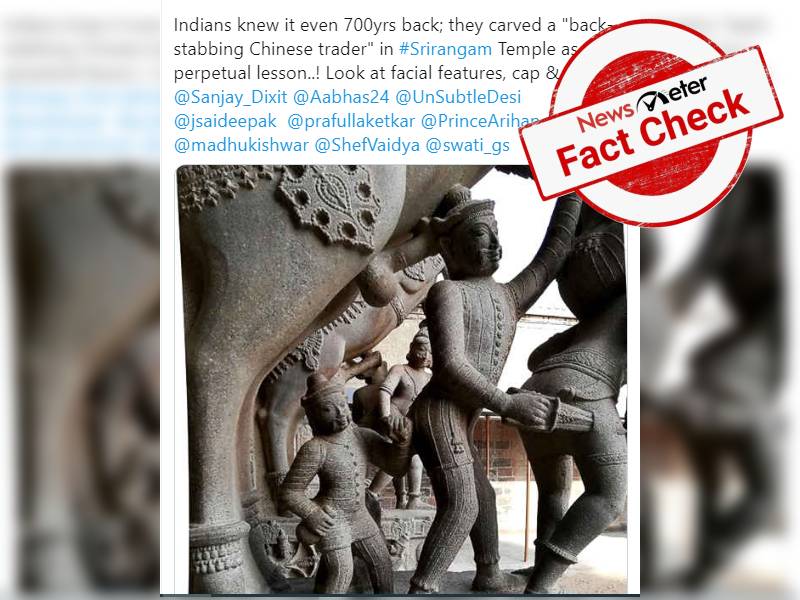Fact Check: Does Srirangam temple has a statue of Chinese man stabbing a warrior?
By Aiswarya Sriram
Hyderabad: After the recent India-China stand-off, India has recently banned 59 Chinese apps and both the nations are holding military-level talks on the border. Amid this, a post is viral on social media that a sculpture at Srirangam temple in Tamil Nadu shows a Chinese man stabbing from behind.
In the photo widely shared on social media, it can be seen that one warrior who is at the foot a horse is stabbed by another in the back of his leg, whom the social media users are calling Chinese.
A tweet posted read, "Indians knew it 700 years back; they carved a "back-stabbing Chinese trader" in #Srirangam temple as a perpetual lesson..! Look at the facial features, cap & attire. (sic)"
The post was also shared on Facebook, stating that this sculpture was a message from our ancestors to beware of Chinese.
Fact Check:
By doing a reverse image search, we found that the image being shared is from the Shesarayam Mandapam of Srirangam temple. According to information available with the UNESCO, the Mandapam was built under the rule of Krishnadevaraya during the Vijayanagara period. The hall features monolithic pillars of wild horses and war scenes.
The particular statue is of a fight scene. According to Prof. Dr S. Baluswamy who has been quoted by a Tamil website, TimesTamilnews.com, that the statue is of a Portuguese invader or trader.
Baluswamy is known for his writings on Tamil Nadu's mural paintings. Prof. Dr S. Balusamy has published about 35 research articles and has conducted four conferences on mural paintings. He has authored and edited more than 10 books which include "Chithirai Maadam", "Mamallapuram- Arjunan Thapasu" (Awarded as the Best Book by the Government of Tamil Nadu). His literary contributions were lauded by various organizations and he has been presented with more than six awards which include "Bharathi Selvar" and "Best Researcher Award".
Further, the article stated that horses were bought from Portuguese traders in Vijayanagara empire.
As Portuguese were good at using guns and horse riding, they were asked to participate in the wars. Sometimes, the Portuguese fought for Naikars and sometimes opposed them. He says that the coat and cap were evidence that the statue is of a Portuguese warrior. He says that the mandapam showed the war field and how things used to happen during the war but has nothing to do with Chinese stabbing Naikars.
It is also believed that the statue depicts the invasion of Delhi sultanate Allaudin Khilji's general, Ulugh Khan's invasion, during the 13th century. A Hindi article by Amarujala states that the mandapam depicts the brave soldiers who participated in the war against Khilji's grmy.
Hence, the claim that the Srirangam statue has anything to do with the Chinese is false.